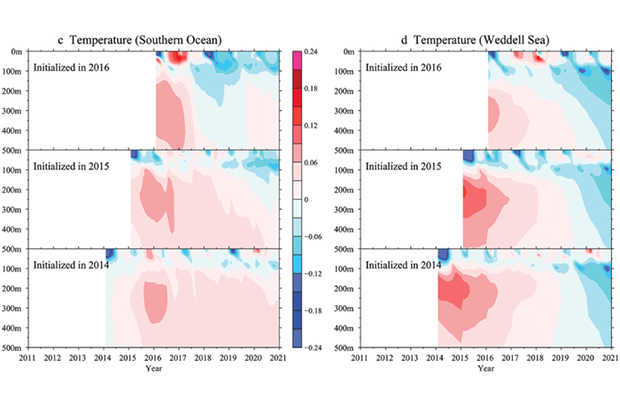The relative role of the subsurface Southern Ocean in driving negative Antarctic Sea ice extent anomalies in 2016–2021

This figure from the newly published study compares temperatures in the Southern Ocean and the Weddell Sea. Credit: doi:10.1038/s43247-022-00624-1

This figure from the newly published study compares temperatures in the Southern Ocean and the Weddell Sea. Credit: doi:10.1038/s43247-022-00624-1
One of the most puzzling observed climate events in recent years was the dramatic decline in Antarctic Sea ice extent (SIE) in late 2016. It remains unclear to what extent this low sea ice extent can be attributed to changing ocean conditions. This SIE retreat persisted for several years after 2016, thus becoming a multiyear shift.
In this study, the authors used a coupled climate model to reproduce these Antarctic SIE characteristics and found that the subsurface Southern Ocean (SO) plays a smaller role in the 2016 SIE extreme event than the atmosphere. However, they also found that the subsurface SO is critical to the persistence of the low SIE state after 2016 and provides a source for multi-year predictability.
The authors’ decadal simulations predicted that subsurface warming would persist and gradually destabilize the ocean from below, in turn reducing SIE over a multiyear period. A sensitivity experiment shows that the multiyear SIE shift would not occur if the anomalously warm subsurface SO in 2016 were replaced by colder conditions.
It is worth noting that the subsurface heat anomaly accounts for approximately half of the multiyear Antarctic SIE shift. The simultaneous atmosphere, ocean, and/or their coupled variabilities after 2016 can further amplify the Antarctic SIE retreat.
Read more at the link below.